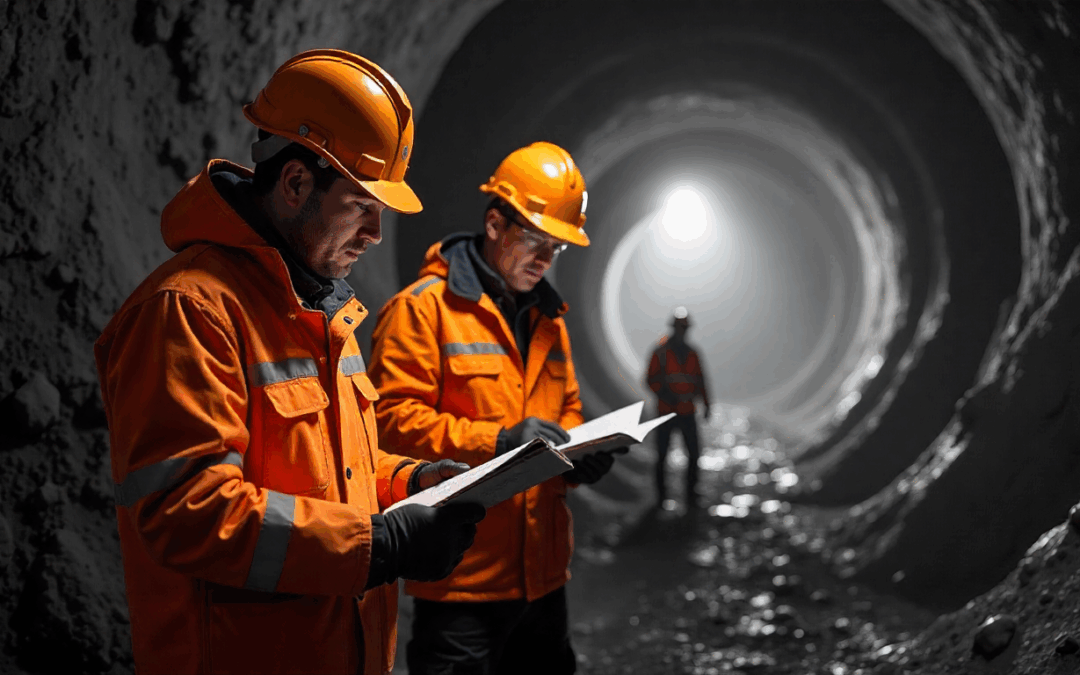Rock bursts are some of the most sudden and dangerous events that underground miners face. Unlike the hazards you find on the surface—like highwall or stockpile collapses—rock bursts happen deep underground when built-up stress in the rock suddenly releases with explosive force. Managing these risks is absolutely critical to keeping miners safe and protecting equipment. In this article, we’ll break down what causes rock bursts, where they’re most likely to happen, and the practical steps mining teams take to prevent and control them. We’ll also look at important techniques like ground support scaling, how monitoring technologies help catch warning signs early, and what goes into effective emergency plans and reporting procedures. Taken together, these efforts form a strong defense against one of underground mining’s toughest challenges.
What Is a Rock Burst? Causes and Types in Underground Mining
Simply put, a rock burst is when energy that’s been trapped in underground rock suddenly explodes out, breaking rock apart and sometimes sending chunks flying into tunnels. This kind of event usually happens in deep mines where the pressure inside the earth is intense. It’s quite different from surface hazards like highwall or stockpile collapses, which are usually caused by weather, erosion, or unstable slopes.
There are a few common types of rock bursts. Strain bursts occur when stressed rock suddenly fails, fault-slip bursts happen when movement along a fault line triggers a release, and pillar bursts take place when the pillars that support a mine become overloaded and collapse. Each has its own quirks, but all require serious attention.
Understanding the Geomechanics Behind Rock Bursts
The science behind rock bursts comes down to how rock behaves under pressure. When mining removes material underground, it changes how weight and stress are distributed. The rock above and around the mine shifts that weight onto pillars and walls, which can build up pressure until the rock just can’t hold it anymore. The depth of the mine, the type of rock, geological faults, and mining techniques all play a role in how likely a rock burst might be.
High-Risk Mining Environments Prone to Rock Bursts
Deep mines, especially those digging into hard rock like gold, nickel, or platinum, are particularly vulnerable to rock bursts. At those depths, the pressure inside the earth gets incredibly high, and the rock is more likely to suddenly fail. Surface operations, on the other hand, face different risks—like loose rock and slope failures—which require their own set of safety practices focused on highwall and stockpile stability. Knowing the difference between these underground and surface hazards helps safety teams tailor their approach and keep workers safe no matter where they’re working.
Prevention Strategies to Minimize Rock Burst Risk
Preventing rock bursts isn’t about avoiding mining altogether, but rather managing how and when rock stress gets released. Mining teams use progressive sequences to avoid sudden stress shifts, precondition the rock with controlled blasting, and design mine layouts that help spread stress more evenly. They also rely on stress mapping and modeling to pinpoint danger zones before digging starts. With these tactics in place, the risk of unexpected bursts can be greatly reduced.
Ground Support Techniques That Reduce Burst Impact
Even with the best prevention efforts, rock bursts can still happen. That’s why strong ground support is crucial underground. A big part of this is ground support scaling, which involves safely removing any loose rock that might fall unexpectedly. Mines also use rock bolts and cable bolts to anchor rock masses, spray shotcrete to hold surfaces together, and install mesh to keep broken rock contained. Together, these methods help keep tunnels safe and protect miners if a burst occurs.
Real-Time Monitoring and Early Warning Systems
Thanks to advances in technology, mines now have tools that help catch warning signs before things go wrong. Sensors detect tiny rock movements and shifts in pressure, sending real-time alerts to operators. This gives crews precious time to evacuate or shore up weak spots, helping to prevent injuries and equipment damage.
Emergency Response Plans for Rock Burst Events
When prevention doesn’t stop a rock burst, a quick, well-organized response can save lives. Emergency plans need clear evacuation routes, reliable communication systems, and trained medical personnel ready to jump into action. Regular drills help everyone know exactly what to do, cutting down on confusion and panic if a real event happens.
Training Workers to Respond to Rock Burst Hazards
Good training is absolutely key. Workers should be able to spot early signs like unusual cracking or noises, know how to safely scale and reinforce rock, and understand what steps to take if a burst happens. Well-prepared crews handle these situations much more effectively, keeping downtime and injuries to a minimum.

Reporting Requirements and Safety Compliance in Rock Burst Zones
Regulations require mining companies to keep thorough records of rock burst events. Reports need to include where and when the burst occurred, what caused it, and what actions were taken afterward. Accurate reporting not only keeps companies compliant but also helps improve safety by learning from each incident.
Enhancing Rock Burst Safety Through Prevention and Reporting
Making underground mining safer from rock bursts takes a multi-pronged approach. By combining solid prevention techniques, strong ground support, advanced monitoring, and clear reporting, mines can protect their workers and equipment better than ever. It’s about being proactive—catching risks early, training teams well, and always striving to improve safety practices. When done right, it keeps mining operations running smoothly and most importantly, keeps everyone going home safe.

